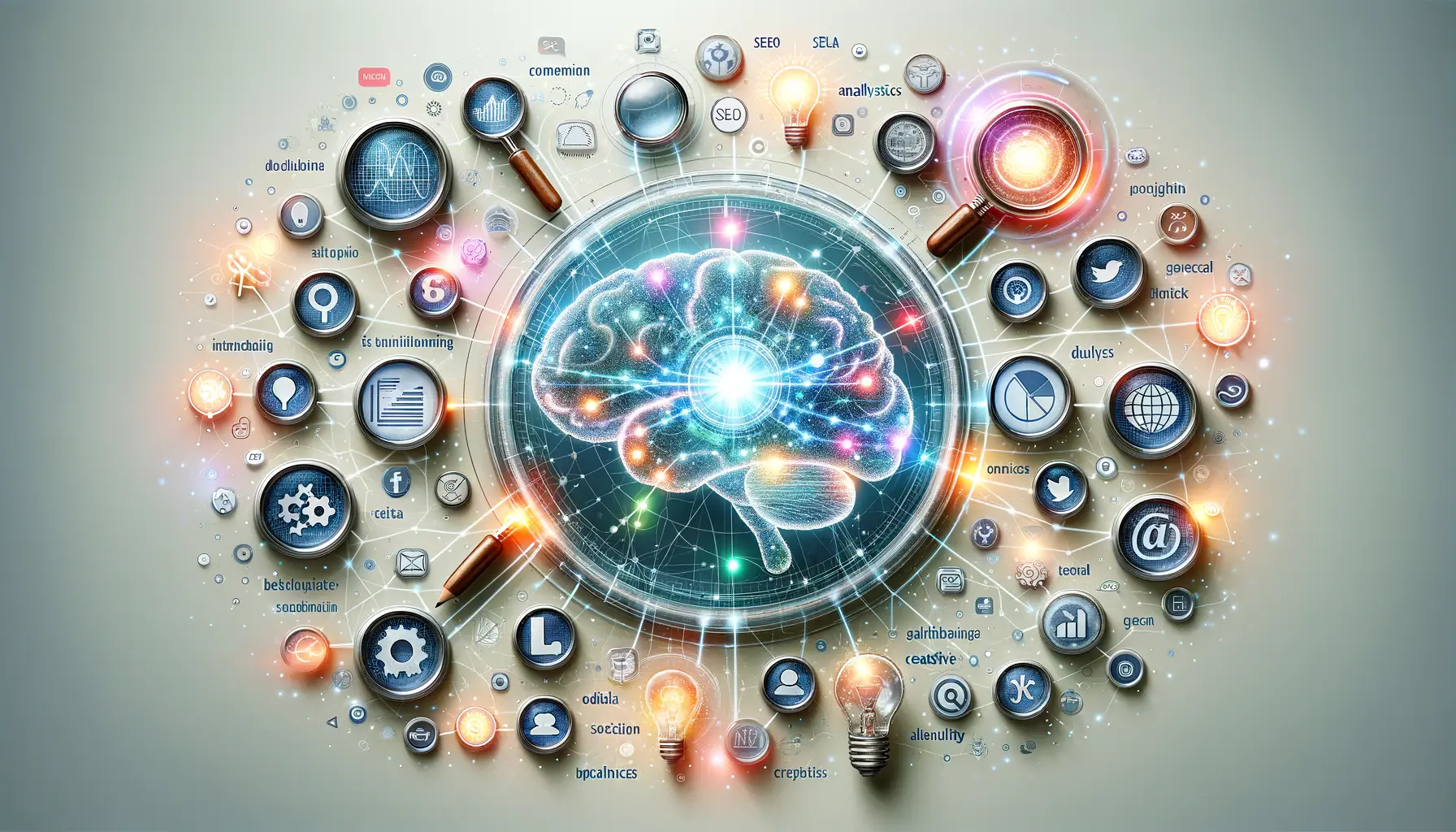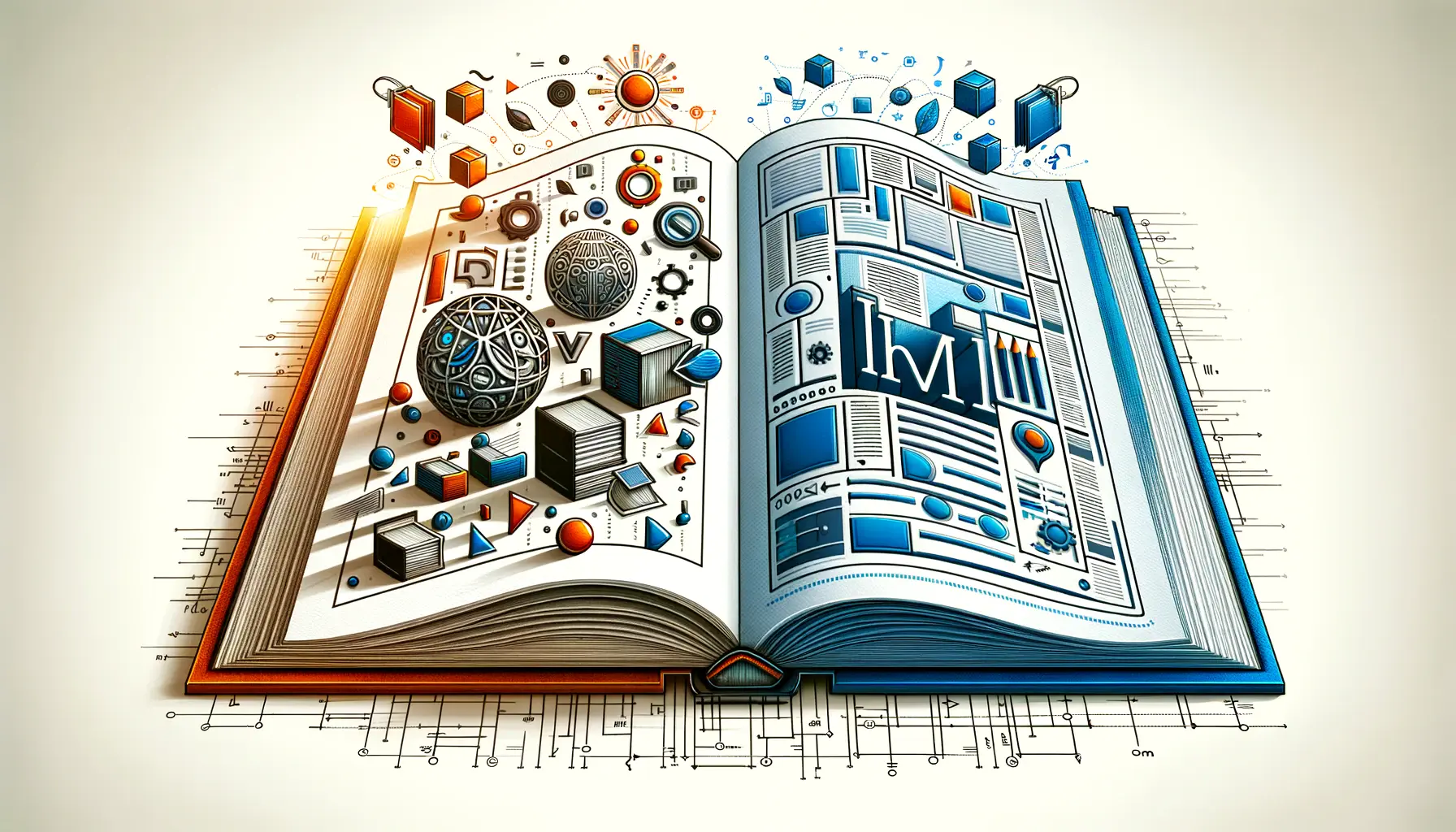In the digital marketing era, sponsored content is now the core strategy for brands that seek to engage authentically with prospects.
By incorporating promotional content subtly within the organic environment of networks like LinkedIn, businesses can convey messages that propel value without excluding users.
This strategy not only generates trust but also increases engagement, making it a mainstay of modern advertising strategies.
- Understanding Sponsored Content in LinkedIn Ads
- Tactic 1: Creating Interesting and Relevant Content
- Tactic 2: Taking Advantage of LinkedIn’s Targeting Capabilities
- Tactic 3: Tracking and Optimizing Performance Metrics
- Tactic 4: Choosing the Appropriate Ad Formats for Your Objectives
- Optimizing Sponsored Content on LinkedIn
- Frequently Asked Questions about Sponsored Content on LinkedIn
Understanding Sponsored Content in LinkedIn Ads
Sponsored content on LinkedIn is paid advertising that blends into a user’s feed, mimicking the format and tone of organic posts.
This native form of advertising makes promotional messages less intrusive and offers a smoother experience for the audience.
Types of Sponsored Content on LinkedIn
- Sponsored Updates: These are posts from a company’s LinkedIn Page that are sponsored to target a wider audience beyond existing followers. They can be in the form of articles, images, videos, or other content types.
- Direct Sponsored Content: Unlike sponsored updates, these advertisements do not appear on the company’s LinkedIn Page. Instead, they are created specifically for advertising purposes, allowing for A/B testing and tailored messaging without cluttering the main page.
Advantages of Sponsored Content on LinkedIn
- Increased Exposure: With promoted content, brands can reach professionals who may not be active followers, expanding their presence across LinkedIn’s extensive user base.
- Targeted Advertising: LinkedIn’s powerful targeting capabilities—such as industry, job function, and seniority—enable sponsored content to reach the most relevant audience, improving engagement rates.
- Higher Engagement: Contextually relevant and naturally appearing in-feed native ads have been found to achieve better interaction rates compared to standard display ads.
- Measurable Results: LinkedIn provides comprehensive analytics for sponsored content performance, allowing marketers to track metrics such as impressions, clicks, and conversions to refine their strategy.
Recognizing and effectively utilizing sponsored content on LinkedIn can significantly enhance a brand’s presence and influence on the platform, leading to stronger engagement and meaningful interactions with target audiences.
Sponsored content on LinkedIn seamlessly integrates with organic posts, making it a powerful tool for engagement. Its effectiveness lies in appearing native while subtly promoting brand messages.
Tactic 1: Creating Interesting and Relevant Content
Creating interesting and relevant sponsored content is important to gain the attention of your audience on LinkedIn.
Knowing your target audience and delivering helpful messages serve to connect with your audience and encourage the desired action.
Identifying Your Target Audience
To create sponsored content that resonates with people, you need to have a good sense of who you’re writing to.
Start by looking at your existing customer base and determining important demographics like:
- Job titles
- Industries
- Company sizes
- Geographic locations
LinkedIn’s Audience Insights feature can provide useful data about your followers and page visitors, helping refine your audience personas.
Additionally, conducting surveys or interviews with your existing clients can offer deeper insights into their challenges and preferences.
This information allows you to customize your sponsored content to meet their specific needs and interests.
Creating Engaging Headlines and Images
Your headline is the first impression your readers will have of your sponsored content, making it crucial to craft an engaging one.
Good headlines are:
- Brief: Keep it within 50-60 characters for brevity and impact.
- Action-packed: Use active verbs that prompt engagement.
- Value-driven: Clearly state the benefit for the reader.
For instance, instead of a generic title such as “New Product Launch,” use “Enhance Your Team’s Productivity with Our New Tool.” This method instantly conveys value and relevance.
Visuals are an important factor in gaining attention and making your message more effective.
To create impactful visuals:
- Use High-Quality Images: Choose professional, high-resolution images that align with your brand’s identity.
- Incorporate Branding Early: Placing branding elements within the first two seconds of a video can increase engagement rates by 16%.
- Ensure Relevance: Select imagery that directly relates to your content and appeals to your target audience.
By combining powerful headlines with engaging imagery, your sponsored content becomes more compelling, increasing the chances of user engagement.
Incorporating Clear Calls-to-Action
A clear call-to-action (CTA) guides your readers to take the next step.
Effective CTAs are:
- Specific: Clearly state what action you want the reader to take, such as “Download Our Free eBook” or “Sign Up for the Webinar.”
- Urgent: Encourage prompt action with phrases like “Sign Up Today” or “Limited Spaces Available.”
- Visible: Ensure your CTA stands out visually using contrasting colors or bold fonts.
For instance, if your campaign goal is lead generation, a CTA like “Get Your Free Consultation Now” can be highly effective.
Aligning your CTA with your campaign objectives ensures that your sponsored content delivers measurable results.
By focusing on these aspects—knowing your audience, designing compelling visuals and headlines, and incorporating strong CTAs—you can create sponsored content that grabs attention, engages users, and drives successful marketing outcomes.
To capture your audience’s attention, create content that is both informative and engaging. Focus on headlines that spark curiosity and visuals that support your message effectively.
Tactic 2: Taking Advantage of LinkedIn’s Targeting Capabilities
Using LinkedIn’s sophisticated targeting features is imperative to get your sponsored content in front of the most appropriate audience.
By taking advantage of these features, you can maximize engagement and attain your marketing goals.
Using Demographic and Firmographic Targeting
LinkedIn provides an extensive set of targeting options based on user demographics and firmographicsData attributes that describe businesses, such as industry, company size, and revenue..
Important parameters include:
- Job Title: Target professionals by their specific job titles to access decision-makers or influencers within organizations.
- Company Industry: Target specific industries to tailor your sponsored content to sector-specific challenges and requirements.
- Company Size: Separate small businesses from enterprises to customize your messaging accordingly.
- Member Age and Gender: Target by age range and gender to align with your campaign’s demographic targeting.
By combining these attributes, you can create a highly targeted audience that closely matches your ideal customer profile, making your sponsored content more relevant and effective.
Using Matched Audiences for Retargeting
LinkedIn’s Matched AudiencesA LinkedIn feature that allows advertisers to retarget users based on website visits, email lists, or company accounts. feature allows you to retarget users who have previously engaged with your business.
This includes:
- Website Retargeting: Re-engage your website visitors by serving them personalized advertisements on LinkedIn, keeping your brand top-of-mind.
- Contact Targeting: Upload your existing email lists to target known contacts on LinkedIn, reinforcing your message to a warm audience.
- Account Targeting: Target specific companies by uploading a list of organizations you’d like to reach, ideal for account-based marketing efforts.
Running these retargeting campaigns ensures that your sponsored content is seen by users who are already familiar with your brand, making them more likely to convert.
A/B Testing with Different Audience Segments
To get the most out of your targeting strategy, perform A/B tests on different audience segments by:
- Building Multiple Audience Sets: Construct distinct audience groups based on different attributes such as job function, industry, or seniority.
- Testing Content Variations: Show different versions of your sponsored content to each audience group to identify which works better.
- Analyzing Performance Metrics: Compare engagement rates, click-through rates, and conversions to identify the top-performing audience-content combinations.
Through systematic A/B testingA method of comparing two versions of an ad or webpage to determine which one performs better., you can refine your targeting strategy to ensure that your sponsored content reaches the most responsive audience, thereby maximizing your return on investment.
LinkedIn’s targeting capabilities allow advertisers to reach the right audience. Utilizing demographic and firmographic filters ensures your sponsored content is seen by the most relevant professionals.
Tactic 3: Tracking and Optimizing Performance Metrics
Tracking and optimizing performance metrics are critical to the success of your sponsored content campaigns on LinkedIn.
By analyzing key metrics, you can make data-driven decisions to optimize the performance of your campaign and achieve your marketing objectives.
Key Performance Indicators (KPIs) to Track
To track the performance of your sponsored content, focus on the following KPIs:
- Impressions: The number of times your ad is displayed to users. High impressions indicate broad visibility.
- Click-Through Rate (CTR): The ratio of clicks to impressions, showing how effectively your ad engages users. According to LinkedIn benchmarks, the typical CTR for sponsored content is between 0.44% and 0.65%.
- Cost Per Click (CPC): The average cost incurred for each click on your ad. Monitoring CPC helps manage your advertising budget efficiently.
- Conversions: The number of desired actions taken by users, such as form submissions or downloads, after interacting with your ad.
- Conversion Rate: The percentage of clicks that result in conversions, indicating the effectiveness of your ad in driving user actions.
- Cost Per Conversion: The average expense to secure a conversion, helping evaluate the return on investment (ROI) of your campaign.
Utilizing LinkedIn’s Analytics Tools
LinkedIn provides robust analytics tools to monitor your sponsored content performance:
- Campaign Manager: Offers real-time data on impressions, clicks, CTR, and conversions, allowing you to evaluate and adjust your campaigns promptly.
- Content Analytics: Provides an overview of engagement metrics for both organic and sponsored content, helping you identify what resonates best with your audience.
Regularly reviewing these analytics allows you to observe trends and fine-tune your sponsored content strategy for better results.
Conducting A/B Testing for Continuous Improvement
A/B testing involves comparing two versions of an ad to determine which one performs better.
To effectively implement A/B testing:
- Test One Variable at a Time: Adjust only one element, such as a headline, image, or CTA, to isolate its impact on performance.
- Divide Your Audience Equally: Display both ad variations to an equal number of users for a fair comparison.
- Measure Performance Over a Sufficient Period: Run tests long enough to collect meaningful data and avoid premature conclusions.
By systematically testing and refining your sponsored content, you can maximize engagement and achieve better results over time.
Adjusting Strategies with Performance Data
Use the insights gained from testing and monitoring to optimize your campaigns:
- Refine Targeting: If certain audience segments show higher engagement, refine your targeting to focus on those groups.
- Optimize Ad Creative: Improve underperforming ads by adjusting headlines, images, or CTAs based on what has worked well.
- Allocate Budget Strategically: Increase investment in high-performing campaigns and scale back spending on campaigns with lower ROI.
Continuous optimization ensures that your sponsored content remains effective and aligned with your marketing goals.
By closely tracking performance metrics and making data-driven adjustments, you can maximize the potential of your sponsored content on LinkedIn, driving higher engagement and conversions.
Monitoring key performance indicators (KPIs) such as CTR, impressions, and conversions is essential. Without continuous tracking, campaign effectiveness may decline over time.
Tactic 4: Choosing the Appropriate Ad Formats for Your Objectives
Choosing the appropriate ad formats is essential to maximize your return on sponsored content on LinkedIn.
Selecting the right ad format for your campaign objectives ensures that your message connects with your audience and achieves the desired outcomes.
Understanding LinkedIn Ad Formats
LinkedIn offers several ad formats, each designed for specific marketing goals:
- Single Image Ads: Utilize a single image with brief text, ideal for straightforward messages and driving website traffic.
- Video Ads: Use video content to tell an engaging story, making them suitable for brand awareness and engagement campaigns.
- Carousel Ads: Feature multiple images or videos in a single ad, making them great for showcasing multiple products or explaining a multi-faceted story.
- Message Ads: Deliver one-on-one direct messages to your audience’s LinkedIn inbox, perfect for targeted promotions and event invitations.
- Dynamic Ads: Automatically personalize ad content by using user profile data, increasing relevance and engagement.
Choosing the Right Ad Format for Campaign Goals
When selecting the best-performing ad format, consider your specific campaign goals:
- Brand Awareness: Capture attention with Video Ads and effectively narrate your brand’s story. According to LinkedIn, video content is five times more likely to start a conversation among members than other types of content.
- Lead Generation: Single Image Ads with clear calls-to-action can drive users to landing pages or lead forms. Additionally, Message Ads can engage users directly with personalized offers, resulting in higher conversion rates.
- Engagement: Carousel Ads encourage interaction by allowing users to swipe through multiple images, increasing the time spent on your content.
- Website Traffic: Single Image Ads and Carousel Ads can effectively drive traffic to your website, especially when paired with compelling headlines and strong calls-to-action.
Best Practices for Ad Format Selection
Use the following best practices to optimize your ad format selection:
- Test Multiple Formats: A/B test different ad formats to determine which performs best with your audience and aligns with your objectives.
- Consider Mobile Users: Optimize your ads for mobile viewing, as a significant portion of LinkedIn users access the platform via mobile devices.
- Leverage LinkedIn’s Recommendations: Utilize LinkedIn’s insights and best practices to select ad formats that align with current trends and maximize results.
By carefully selecting ad formats that align with your campaign objectives and audience interests, you can enhance the performance of your sponsored content on LinkedIn, leading to improved engagement and a higher return on investment.
Each LinkedIn ad format serves a unique purpose. Choose carousel adsA LinkedIn ad format that allows users to swipe through multiple images or videos within a single ad. for storytelling, video ads for engagement, and message ads for direct communication with prospects.
Optimizing Sponsored Content on LinkedIn
An effective sponsored content strategy on LinkedIn is crucial for businesses looking to maximize visibility, enhance interactions, and generate leads.
When executed correctly, the right approach can optimize campaigns to reach the target audience and deliver measurable results.
Main Points from Optimizing Sponsored Content
Throughout this article, we covered essential strategies to enhance sponsored content performance on LinkedIn.
These tactics are designed to help refine your strategy and ensure your ads make the maximum impact.
- Creating Engaging and Relevant Content: Understanding your audience and crafting compelling headlines, visuals, and clear calls-to-action are key to capturing user attention.
- Taking Advantage of LinkedIn’s Advanced Targeting Features: Leveraging demographic and firmographic targeting, matched audiences, and A/B testing allows brands to reach the right audience at the right time.
- Monitoring and Optimizing Based on Performance Metrics: Tracking key performance indicators (KPIs) such as impressions, CTR, and conversions facilitates data-driven decision-making for continuous improvement.
- Selecting the Right Ad Formats: Aligning ad formats with campaign objectives—whether brand awareness, engagement, or lead generation—ensures the effectiveness of your LinkedIn advertising efforts.
Best Practices for Long-Term Success
Companies should adopt best practices to maintain a strong and sustainable LinkedIn advertising strategy.
- Test and Refine Continuously: A/B testing different aspects of your sponsored content—ad copy, visuals, and targeting—helps identify the most effective combinations.
- Leverage LinkedIn Insights: Utilize LinkedIn’s analytics tools to track campaign performance and gain insights into user engagement patterns.
- Optimize for Mobile: Since a significant portion of LinkedIn users access the platform via mobile devices, ensuring mobile-friendly content enhances accessibility and engagement.
- Invest in High-Quality Creative: Professionally designed images, well-produced videos, and strong messaging enhance credibility and audience engagement.
- Align Sponsored Content with Business Objectives: Ensure that each sponsored content campaign has a clear goal, whether it’s increasing brand awareness, generating leads, or driving conversions.
The Future of Sponsored Content on LinkedIn
As LinkedIn continues to evolve as a leading platform for professional engagement, sponsored content remains a powerful tool for businesses.
With advertising trends shifting towards personalization, AI-driven insights, and interactive formats, staying ahead of these developments will be key to maintaining a competitive edge.
By continuously optimizing strategies, analyzing performance metrics, and aligning content with audience interests, businesses can ensure that their sponsored content campaigns generate meaningful results.
Success in LinkedIn advertising isn’t just about reaching a broader audience; it’s about engaging the right people with valuable and relevant content.
Mastering sponsored content optimization on LinkedIn requires a blend of creativity, data analysis, and strategic planning.
When executed effectively, these efforts lead to stronger brand positioning, increased audience engagement, and long-term business growth.
Consistently testing and refining your sponsored content strategy leads to better engagement. A/B testing and data-driven decisions ensure long-term success.
Enjoyed the article? Let its author handle your social media ads. Visit our service page to get started!
Frequently Asked Questions about Sponsored Content on LinkedIn
Sponsored content on LinkedIn is a native advertising format that appears directly in the LinkedIn feed.
It allows businesses to promote their messages to a targeted professional audience without disrupting the user experience.
LinkedIn’s ad auction determines which ads to display based on bid amount, ad relevance, and predicted engagement.
This system ensures that users receive the most relevant sponsored content in their feed.
LinkedIn offers several ad formats for sponsored content, including single image ads, video ads, carousel ads, and event ads.
These formats cater to different marketing objectives and audience engagement strategies.
To maximize performance, design relevant, concise, and engaging sponsored content that blends naturally with LinkedIn’s feed.
Using strong visuals, clear calls-to-action, and precise targeting improves audience engagement.
LinkedIn provides advanced targeting options, including demographics, job titles, industries, and company sizes.
These targeting features help businesses reach the right audience with their sponsored content for better engagement and conversion rates.
Success can be measured by tracking key performance indicators such as impressions, click-through rateThe percentage of users who click on an ad after seeing it. (CTR), and conversions.
These metrics provide insights into how well your sponsored content is performing.
LinkedIn allows advertisers to set their own budgets, with no mandatory minimum.
This flexibility ensures that businesses of all sizes can utilize sponsored content based on their marketing goals and resources.
The Campaign Quality Score measures the relevance and effectiveness of your sponsored content.
A higher score can improve ad visibility and lower costs by ensuring your ad is shown to the most relevant audience.
Yes, LinkedIn supports A/B testing for sponsored content.
You can experiment with different ad elements, such as headlines, images, and CTAs, to determine what resonates best with your target audience.












